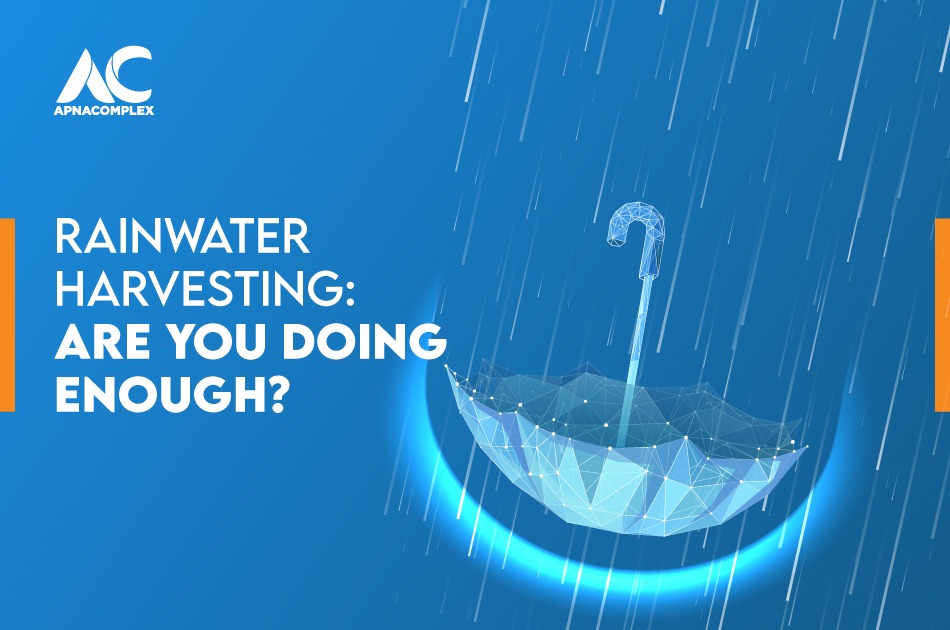Is Your Society Still Dependent on Tankers? Blame it on Outdated Rainwater Harvesting
Product News rainwater harvesting, water crisis, water scarcity, water tanker, Water Treatment PlantIndia is in the midst of a severe water crisis. Despite a 4% share of the world’s water resources, large swaths of the country are water-stressed with a 2019 NITI Aayog report terming it as the worst water crisis in its history. 21 cities, including Bangalore, Delhi, Hyderabad and Chennai, have exhausted their groundwater supply, impacting more than 600 million people.
One of the measures taken to address this problem is rainwater harvesting (RWH). As a sustainable approach, RWH can be instrumental in optimising water conservation. Instead of piecemeal solutions that are often expensive and unreliable, this system seeks to use freely available rain water, thus helping people to gain water self-sufficiency. But are we leveraging the full potential of rainwater harvesting? As many gated communities and residential complexes face drying borewells and become increasingly dependent on water tankers to meet their daily needs, it is time to ask ourselves – are we doing enough to fully realise rainwater harvesting? Should we invest in new designs?
Making rainwater harvesting mandatory
The realisation of an impending disaster has been building up for some time now, thanks to environmentalists, water activists, and citizen movements. India’s water problems are complex, compounded by high water dependence in agriculture, a growing population, and urbanisation. While these problems require a well-planned, coordinated and long-term approach, we also need an intensive short-term solution that can help in staving off the water crisis.
Rainwater harvesting (RWH) is seen as one of the essential mechanisms towards resolving some of the immediate concerns on water conservation. As a result, rainwater harvesting has been made legally mandatory in at least 14 states and 3 Union Territories. The imposition of the policy has been highly sought and with good reason.
However, this implementation has not been without its own challenges. As our borewells run dry and water scarcity deepens in our big cities, it becomes imperative that we re-evaluate existing RWH policies and equipment in residential complexes to evaluate their effectiveness. With the emergence of new designs and approaches, residential societies have the opportunity to upgrade and improve their existing systems to ensure a sustainable approach towards water conservation.
Why must residential complexes invest in rainwater harvesting?
Many residential management committees view RWH as just another box they have to tick for legal compliance or to gain green certification. Few realise the long-term environmental and financial benefits of this approach. Today, the groundwater levels are so depleted in many of our cities that even borewells have dried up. Consequently, many residential communities depend completely on tankers for their water supply. However, this can only be a stopgap solution since it focuses on meeting escalating consumption without replenishing the source.
RWH addresses water depletion in a sustainable manner that replenishes the groundwater, improving the water table in an area. It focuses on harvesting rainwater, available freely, through a proper filtration system. It is used to capture rooftop rainwater and surface runoff for storage or to recharge the groundwater.
In short, rainwater harvesting allows residential societies to:
- Reduces dependency on tankers and saves 20-30% on water bills
- Prepare for the possibility of water cuts
- Free access to fresh and high-quality rainwater during monsoons
- Conserve rainwater for various purposes like gardening and cleaning
- Significantly improving TDS quality of consumable water.
- Addressing the hard water crisis since rainwater has a high TDS.
- Recharge borewells, improving the water table over a period.
But is your RWH design doing its job?
India has a long tradition of rainwater harvesting. Even in arid regions of the Thaar desert, traditional structures like kundis, baoris, jhalaras, tankas, khadins, and baolis were used to store rainwater directly and were often adequate for meeting local requirements. In high rainfall areas like the Brahmaputra valley and the Indo-Gangetic Plains, storage structures like dighis and dongs were built to ensure proper conservation and utilisation of rainwater.
Over time a more conventional design emerged where rainwater would be stored in a large pit and filtered by using a combination of sand, pebbles/gravels/metals, carbon, and charcoal. The problem here is that this structure contracts all sediments in one place, increasing the likelihood of choking. Maintenance is cumbersome as filtration media has to be removed by a mechanical device and needs high effort. In addition, there are no measuring parameters to check the performance of the structure.
Unfortunately, these conventional systems often fall short, unable to completely meet heavy requirements. This can be evidenced from the inability of residential complexes to replenish their borewells despite installing RWH systems. In fact, many RWAs find themselves even more dependent on tankers. These structures are also almost impossible to quantify in terms of performance. We have almost no means of gauging their efficiency.
So, while rainwater harvesting is a sustainable solution, we need a design revolution to improve the existing systems. We need to rethink and invest in designs that use a different filtration structure and media. It must be accessible for repairs and easy maintenance with a measurable performance. Residential societies must take the initiative and partner with RWH specialists who are design-based and can think out of the box. It’s time to gain water independence!
